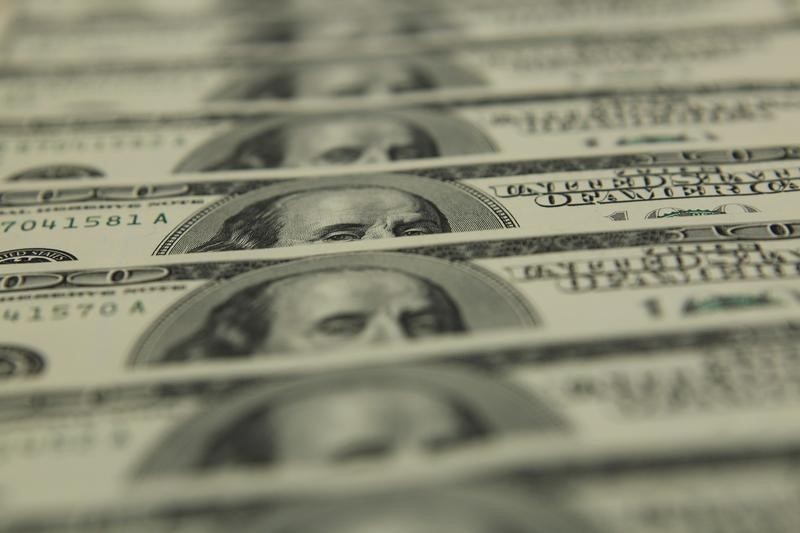Investing.com - The dollar erased losses against the other major currencies on Thursday, re-approaching a two-week high despite the release of mostly downbeat U.S. economic reports as the greenback recovered from the Federal Reserve’s latest policy statement.
The U.S. Department of Labor said the number of individuals filing for initial jobless benefits in the week ending June 11 increased by 13,000 to 277,000 from the previous week’s total of 264,000. Analysts expected jobless claims to rise by 6,000 to 270,000 last week.
Separately, the U.S. Commerce Department said consumer prices rose 0.2% in May, compared to expectations for a 0.3% gain. Year-over- year, consumer prices were 1.0% higher last month, below expectations for a 1.1% gain.
Core CPI, which excludes food and energy costs, increased as expected in May by 0.2%.
On a more positive note, the Federal Reserve Bank of Philadelphia said its manufacturing index improved to 4.7 this month from -1.8 in May, beating expectations for a rise to 1.1.
USD/JPY was down 1.58% at 104.33, the lowest level since August 2014 after Bank of Japan officials voted to continue expanding the monetary base at an annual rate of about ¥80 billion.
At the conclusion of its monetary policy meeting on Thursday, the BoJ also flagged the EU referendum on June 23 as a key geopolitical threat to the Japanese economy, along with the “European debt problem”.
The decision came after the Fed also cited the referendum as a factor in its decision on Wednesday to keep interest rates on hold.
The dollar had already weakened against the other major currencies when the Fed kept rates unchanged and lowered forecasts for how much they expect to hike interest rates in the next few years.
EUR/USD declined 0.68% to 1.1183.
The dollar moved higher against the pound and the Swiss franc, with GBP/USD down 0.52% at 1.4133 and with USD/CHF climbing 0.59% to 0.9672.
The pound weakened after the Bank of England left its monetary policy unchanged, in line with expectations, and reiterated that the possibility of a Brexit was "the largest immediate risk facing U.K. financial markets, and possibly also global financial markets."
Also Thursday, the Swiss National Bank left its benchmark interest rate unchanged at a record-low -0.75% and reiterated that it is still prepared to take further action to weaken the franc.
The Australian and New Zealand dollars were weaker, with AUD/USD down 0.93% at 0.7340 and with NZD/USD slipping 0.11% to 0.7028.
Earlier Thursday, the Australian Bureau of Statistics said the number of employed people rose by 17,900 in May, beating expectations for an increase of 15,000, while the unemployment rate remained unchanged at 5.7% last month.
In New Zealand, official data showed that gross domestic product rose 0.7% in the first quarter, exceeding expectations for an increase of 0.5%. Year-on-year, GDP rose by 2.8% in the last quarter.
Elsewhere, USD/CAD advanced 0.87% to trade at at a nearly two-week high of 1.3025.
The U.S. dollar index, which measures the greenback’s strength against a trade-weighted basket of six major currencies, was up 0.46% at a nearly two-week high of 95.06.
